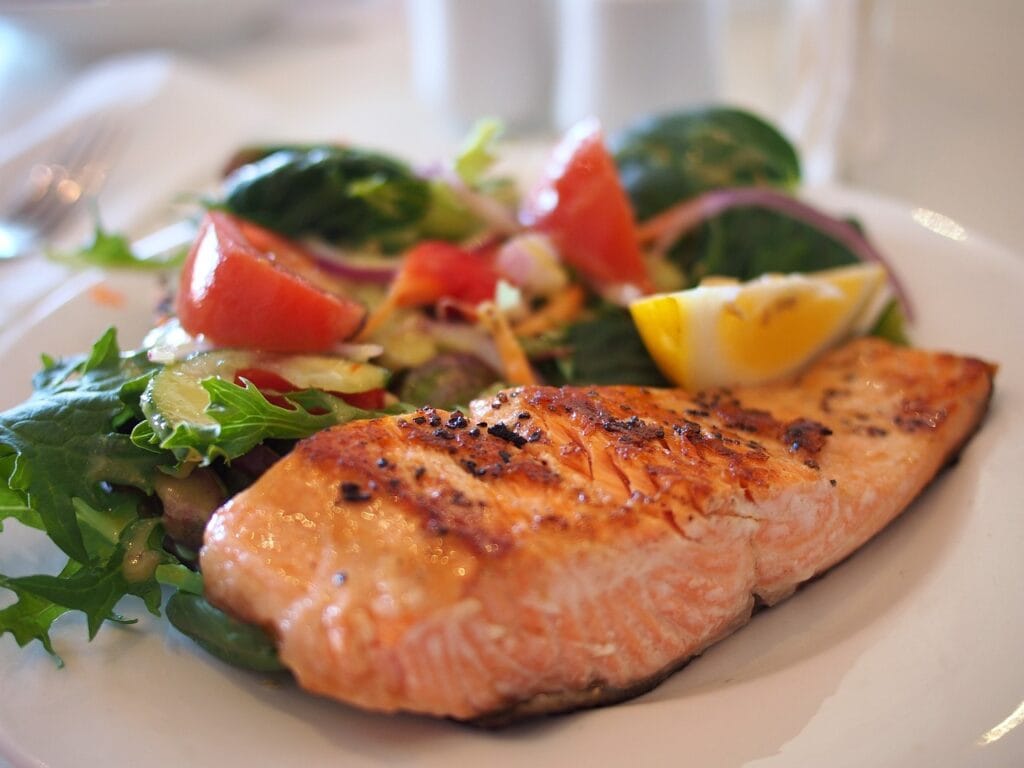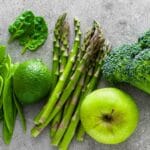The ketogenic diet has gained immense popularity in recent years due to its potential benefits for weight loss, blood sugar control, and overall health. However, the traditional keto diet often emphasizes high-fat meats and dairy, which might not suit everyone. For those who prefer to eat seafood and plant-based foods, a pescatarian keto diet offers a compelling alternative. This a Guide to Pescatarian Keto explores everything you need to know about the pescatarian keto diet, including its benefits, food options, meal plans, and tips to get started.
What is a Pescatarian Keto Diet?
A pescatarian keto diet is a variation of the traditional ketogenic diet that excludes meat and poultry but includes fish and other seafood. The diet still follows the high-fat, low-carb principles of keto but relies on seafood, eggs, dairy, and plant-based fats for protein and nutrients. This approach is ideal for those who wish to combine the benefits of a keto diet with the health advantages of consuming more fish and plant-based foods.
Benefits of a Pescatarian Keto Diet
- Improved Heart Health: The pescatarian keto diet includes fatty fish such as salmon, mackerel, and sardines, which are rich in omega-3 fatty acids. Omega-3s are known for their heart health benefits, including reducing inflammation, lowering blood pressure, and decreasing triglyceride levels.
- Enhanced Weight Loss: Like the traditional keto diet, a pescatarian keto diet promotes weight loss by encouraging the body to enter a state of ketosis, where it burns fat for energy instead of carbohydrates. Including seafood can provide a lean source of protein that helps to maintain muscle mass while shedding fat.
- Better Nutrient Profile: Seafood is an excellent source of essential nutrients such as vitamin D, B vitamins, iodine, and selenium. Combining these with keto-approved vegetables and healthy fats ensures a nutrient-dense diet that supports overall health.
- Sustainability: Many people choose a pescatarian diet for ethical or environmental reasons. Seafood generally has a lower environmental impact compared to red meat, and choosing sustainably sourced fish can further reduce your ecological footprint.
- Reduced Inflammation: The anti-inflammatory properties of omega-3 fatty acids found in fish can help reduce inflammation throughout the body, potentially lowering the risk of chronic diseases such as arthritis, diabetes, and certain cancers.
Foods to Eat on a Pescatarian Keto Diet
The pescatarian keto diet includes a variety of foods from different food groups. Here’s a detailed list of what you can include in your meal plan:
1. Seafood:
- Fatty Fish: Salmon, mackerel, sardines, trout, and tuna.
- Shellfish: Shrimp, crab, lobster, scallops, and mussels.
- White Fish: Cod, haddock, tilapia, and halibut.
2. Low-Carb Vegetables:
- Leafy Greens: Spinach, kale, arugula, and lettuce.
- Cruciferous Vegetables: Broccoli, cauliflower, Brussels sprouts, and cabbage.
- Others: Zucchini, bell peppers, asparagus, and cucumbers.
3. Healthy Fats:
- Avocado and avocado oil.
- Olive oil and olives.
- Nuts and seeds (in moderation due to their carb content).
- Coconut oil and MCT oil.
4. Dairy and Eggs:
- Full-fat dairy products: Cheese, cream, Greek yogurt, and butter.
- Eggs: A versatile source of protein and fat.
5. Plant-Based Proteins:
- Tofu and tempeh (ensure they are low in carbs).
- Seaweed and algae-based products.
6. Low-Carb Fruits:
- Berries: Strawberries, raspberries, blackberries, and blueberries (in moderation).
- Other: Avocado, olives, and coconut.
YOU MAY ALSO LIKE: Your Guide to Keto-Friendly Meats and Seafood
Foods to Avoid on a Pescatarian Keto Diet
To maintain ketosis and reap the benefits of the diet, it’s essential to avoid the following:
- High-Carb Vegetables: Potatoes, sweet potatoes, corn, and peas.
- Grains and Starches: Rice, pasta, bread, and quinoa.
- Sugary Foods: Candy, pastries, soda, and other sweetened beverages.
- High-Carb Fruits: Bananas, apples, grapes, and oranges.
- Legumes: Beans, lentils, chickpeas, and peanuts.
Sample Pescatarian Keto Meal Plan
To help you get started, here’s a sample meal plan that outlines a day on the pescatarian keto diet:
Breakfast:
- Scrambled eggs with smoked salmon, spinach, and a side of avocado.
- Coffee with heavy cream or MCT oil.
Lunch:
- Grilled shrimp salad with mixed greens, cucumber, olives, and a dressing made from olive oil, lemon, and herbs.
- A handful of macadamia nuts.
Snack:
- Celery sticks with cream cheese or guacamole.
Dinner:
- Baked salmon with a side of cauliflower rice and sautéed asparagus in garlic butter.
- A small serving of berries with whipped cream for dessert.
Snack:
- A hard-boiled egg or a small cheese platter with olives.
Tips for Success on a Pescatarian Keto Diet
- Plan Your Meals: Planning your meals ahead of time can help you stay on track and ensure you’re meeting your nutritional needs. Use apps or meal planning guides to keep your diet balanced and diverse.
- Focus on Healthy Fats: Since the keto diet is high in fat, prioritize healthy fats such as those from fish, avocados, nuts, and seeds. Avoid processed and hydrogenated oils.
- Choose Sustainable Seafood: Opt for sustainably sourced seafood to support environmental efforts and reduce the risk of consuming fish high in mercury or other contaminants.
- Monitor Your Macros: Keep track of your macronutrient intake to ensure you’re staying within the required range for ketosis. Adjust your carb, protein, and fat intake as needed based on your goals and activity levels.
- Stay Hydrated: Proper hydration is crucial on the keto diet, as ketosis can increase the need for fluids and electrolytes. Drink plenty of water and consider supplementing with electrolytes to avoid dehydration.
- Experiment with Recipes: Variety is key to staying committed to the pescatarian keto diet. Explore different recipes and cooking methods to keep your meals interesting and satisfying.
Potential Challenges and How to Overcome Them
While the pescatarian keto diet has many benefits, there are some challenges to be aware of:
- Mercury Exposure: Consuming too much fish high in mercury, such as tuna and swordfish, can pose health risks. Limit your intake of these fish and choose options lower in mercury, like salmon and sardines.
- Nutrient Deficiencies: Since the diet excludes meat and poultry, it’s essential to ensure you’re getting enough iron, vitamin B12, and other nutrients typically found in these foods. Consider supplementation if needed.
- Limited Food Options: The pescatarian keto diet can be restrictive, which may lead to boredom or difficulty in finding suitable foods, especially when dining out. Plan ahead and have keto-friendly snacks on hand to stay on track.
- Adapting to Ketosis: Some people may experience symptoms of the “keto flu” when first starting the diet, including headaches, fatigue, and irritability. These symptoms are temporary and can be mitigated by staying hydrated, replenishing electrolytes, and gradually reducing carbs.
Conclusion
The pescatarian keto diet is an excellent option for those looking to combine the benefits of a ketogenic diet with a seafood-based approach. By focusing on healthy fats, low-carb vegetables, and nutrient-dense seafood, this diet can support weight loss, improve heart health, and offer a sustainable way to eat. With careful planning, mindful food choices, and a commitment to your goals, the pescatarian keto diet can be a delicious and effective way to enhance your health and well-being.
References
- Volek, J. S., & Phinney, S. D. (2012). The Art and Science of Low Carbohydrate Performance. Beyond Obesity LLC.
- Wang, D. D., & Hu, F. B. (2017). Dietary Fat and Risk of Cardiovascular Disease: Recent Controversies and Advances. Annual Review of Nutrition, 37, 423-446.
- Micha, R., Peñalvo, J. L., Cudhea, F., Imamura, F., Rehm, C. D., & Mozaffarian, D. (2017). Association Between Dietary Factors and Mortality From Heart Disease, Stroke, and Type 2 Diabetes in the United States. JAMA, 317(9), 912-924.
- Calder, P. C. (2017). Omega-3 Fatty Acids and Inflammatory Processes: From Molecules to Man. Biochemical Society Transactions, 45(5), 1105-1115.
- Shepon, A., Eshel, G., Noor, E., & Milo, R. (2018). The Opportunity Cost of Animal Based Diets Exceeds All Food Losses. Proceedings of the National Academy of Sciences, 115(15), 3804-3809.


